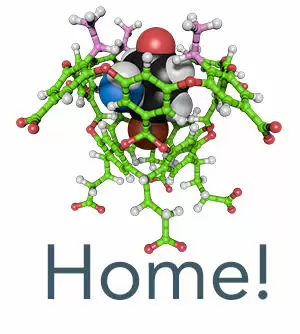Jordan, J. H.; Ashbaugh, H. S.; Mague, J. T.; Gibb, B. C. Buffer and salt effects in aqueous host—guest systems: Screening, competitive binding, or both?. Journal of the American Chemical Society 2021, 143, 18605-18616.
Publications
2021
Gibb, B. C. Hitting the buffers. Nature Chemistry 2021, 13, 1023-1024.
Gibb, B. C. The road to hell is irreversible. Nature Chemistry 2021, 13, 390–391.
Gibb, B. C. The rise and rise of lithium. Nature Chemistry 2021, 13, 107–109.
Yao, W.; Wang, K.; Ismaiel, Y. A.; Wang, R.; Cai, X.; Teeler, M.; Gibb, B. C. Electrostatic Potential Field Effects on Amine Macrocyclizations within Yoctoliter Spaces: Supramolecular Electron Withdrawing/Donating Groups. The Journal of Physical Chemistry B 2021, 125, 9333-9340.
Alagbe, B. D.; Gibb, B. C.; Ashbaugh, H. S. Evolution of the Free Energy Landscapes of n-Alkane Guests Bound within Supramolecular Complexes. The Journal of Physical Chemistry B 2021, 125, 7299-7310.
Shusterman-Krush, R.; Tirukoti, N. D.; Bandela, A. K.; Avram, L.; Allouche-Arnon, H.; Cai, X.; Gibb, B. C.; Bar-Shir, A. Single Fluorinated Agent for Multiplexed 19F-MRI with Micromolar Detectability Based on Dynamic Exchange. Angewandte Chemie International Edition 2021, 60, 15405-15411.
Abstract The weak thermal polarization of nuclear spins limits the sensitivity of MRI, even for MR-sensitive nuclei as fluorine-19. Therefore, despite being the source of inspiration for the development of background-free MRI for various applications, including for multiplexed imaging, the inability to map very low concentrations of targets using 19F-MRI raises the need to further enhance this platform s capabilities. Here, we employ the principles of CEST-MRI in 19F-MRI to obtain a 900-fold signal amplification of a biocompatible fluorinated agent, which can be presented in a “multicolor” fashion. Capitalizing on the dynamic interactions in host–guest supramolecular assemblies in an approach termed GEST, we demonstrate that an inhalable fluorinated anesthetic can be used as a single 19F-probe for the concurrent detection of micromolar levels of two targets, with potential in vivo translatability. Further extending GEST with new designs could expand the applicability of 19F-MRI to the mapping of targets that have so-far remained non-detectable.
Ashbaugh, H. S.; Gibb, B. C.; Suating, P. Cavitand Complexes in Aqueous Solution: Collaborative Experimental and Computational Studies of the Wetting, Assembly, and Function of Nanoscopic Bowls in Water. The Journal of Physical Chemistry B 2021, 125, 3253-3268.
Yao, W.; Wang, K.; Wu, A.; Reed, W. F.; Gibb, B. C. Anion binding to ubiquitin and its relevance to the Hofmeister effects. Chemistry Science 2021, 12, 320-330.
Although the non-covalent interactions between proteins and salts contributing to the Hofmeister effects have been generally mapped, there are many questions regarding the specifics of these interactions. We report here studies involving the small protein ubiquitin and salts of polarizable anions. These studies reveal a complex interplay between the reverse Hofmeister effect at low pH, the salting-in Hofmeister effect at higher pH, and six anion binding sites in ubiquitin at the root of these phenomena. These sites are all located at protuberances of preorganized secondary structure, and although stronger at low pH, are still apparent when ubiquitin possesses no net charge. These results demonstrate the traceability of these Hofmeister phenomena and suggest new strategies for understanding the supramolecular properties of proteins.
2020
Gibb, B. C. Chemistry of the sky god. Nature Chemistry 2020, 12, 974–976.

